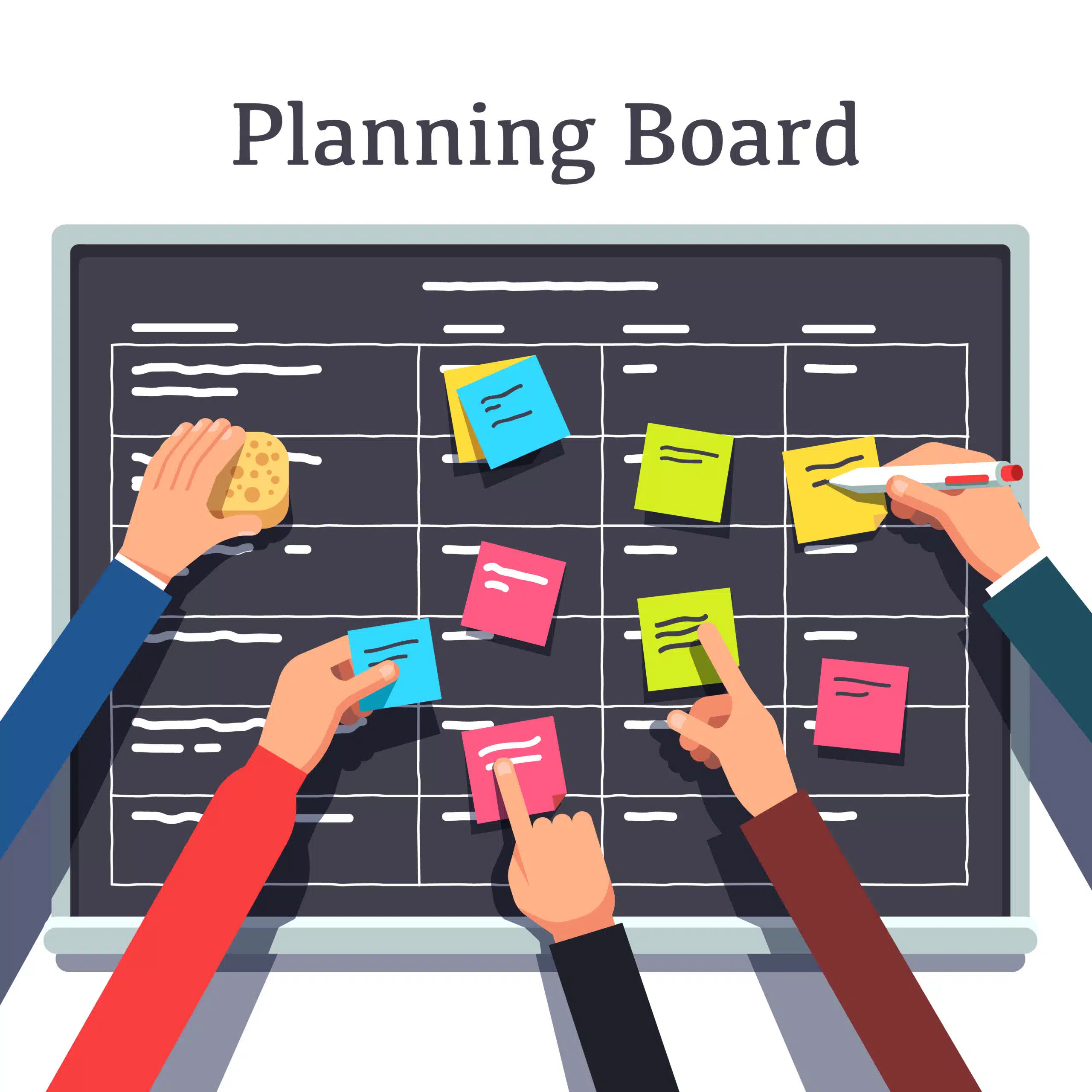Manage Work More Efficiently with Kanban-Based HR Management
Kanban is known by many to originate from Toyota Production System. It was developed by Taiichi Ohno, who worked as an industrial engineer at Toyota, to improve and maintain a high level of production in the company.

What is the Kanban?
The word “Kanban” translates to “Japanese” or “signboard” in Chinese. Intuitively, the Kanban has everything to do with seeing or visualizing.
The Kanban method was introduced to the manufacturing industry by Taiichi Ohno. However, it is David J. Anderson who is credited with applying this concept in software development in 2004. Essentially, the Kanban method is a process where you gradually better what you do, especially by visualizing all the work you have on a simple board. Almost all departments of an organization can benefit from applying the principles of the Kanban method.
Basic Principles
This method follows a set of basic principles of kanban board that govern management and help in improving workflow. It is a non-disruptive method that enhances steady improvements to an organization’s processes. When followed carefully, these principles help you to effectively use the Kanban method for work completion and hence more benefits for your business. Essentially, these principles help businesses with their different processes by improving workflow, reducing cycle time, increasing customer value. What’s more, all this can be done with greater predictability.
The four core principles of the Kanban method are as outlined below:
- Start with Whatever You Are Doing Now
The Kanban method strictly emphasizes on not making any changes to the existing setup or process right away. This method must be applied directly to the current workflow. Any necessary changes can occur gradually over a duration, and at a pace every member of the team is comfortable with.
- Focus on Pursuing Incremental and Evolutionary Change
Kanban method encourages those leading organizations to effect small additional changes rather than radical ones. With radical changes, you are always bound to meet resistance from members of your team or organization.
- Respect the Initial Job Titles, Roles and Responsibilities
This method does not impose any organizational changes all by itself. As such, it is not necessary to implement changes to your existing functions and roles which at the moment, could be performing well. The entire team or the relevant departments of the organization should formulate and implement the changes needed. These principles help overcome the fear of change and emotional resistance that usually hamper an organization’s change initiatives.
- Encourage Leadership Acts at All Levels
The Kanban method advocates for continuous improvement throughout all levels of an organization. Further, this method insists that leadership acts should not only come from senior managers of an organization but also people at all levels. With ideas and acts of leadership from different people, change can continually be implemented hence improving the services offered by an organization.
Kanban-based HR Management
Being in the HR department of an organization, you are tasked with the great challenge —recruiting. After this, HR must follow up and complete tasks such as personnel induction, training and design performance and reward schemes.

The main challenges that face HR departments in many organizations are:
- Pressure from the demand on the team. Sometimes, the demand outstrips the capacity of the HR to service it. This may lead to the team racking up more working hours or even working from home to be on top of things.
- Prioritization of tasks can become an issue.
- There can be many dependencies and hand-offs to other departments such as IT, Finance and Legal.
- Delivery against their deadlines is mostly at risk because of the unpredictability of teams they count on.
- They may suffer eroded reputation within the organization due to missed deadlines, SLA’s and slow responsiveness which results in low team morale.
Card Wall
Kanban for HR may go as basic as setting up a card wall or board. This is usually a useful starting point for organizations.

Your Kanban board should have three sections:
- To Do: This section contains a list of activities you expect to finish in the coming days, weeks or months.
- Doing: These are the on-going tasks that you are handling as a department.
- Done: These are tasks or objectives that you set and have already been accomplished.
Benefits of Kanban-based HR Management
The advantages of using a Kanban board are visible. Let’s take a look at how a Kanban impacts HR’s performance:
Work Visualization
A Kanban board provides a degree of visibility for the team and other stakeholders. With every new task, you should use a differently colored card to label from the first column of the board and finish in the last one. This way, you can track all the tasks, identifying which one is awaiting completion.
So, how is even helpful? There is a reason why we prefer to see things. The brain can process visual markers faster than it does with text. Visualizing your tasks helps track work as well as tracking performance more conveniently.
Limiting Work in Progress
Probably the most significant benefit and what makes the Kanban method so efficient. By limiting the work in progress, you essentially help members of the HR team to stay focused and strive to finish more work. As opposed to the common belief that multitasking is key to doing more, single-tasking, which is essentially limiting work in progress, helps teams focus and work more productively.
Change of Behavior
With a visible plan of work, teams change their behaviors. This effect does not only occur among the members of the HR team, but also to the entire organization. Through collaborative working, relationships are strengthened thereby facing surface blockers effectively.
Bottom Line
In our clouded and sometimes chaotic workplaces, a proper method of completing tasks and reaching objectives is needed. Team leaders may not remember everything they are supposed to be working on. Instead of struggling to remember everything, HR teams and other departments of an organization should embrace the Kanban method. By following its principles, tasks are executed in order and productivity is increased. What’s more, online tools that are based on Kanban present a convenient way of organizing and executing tasks.





